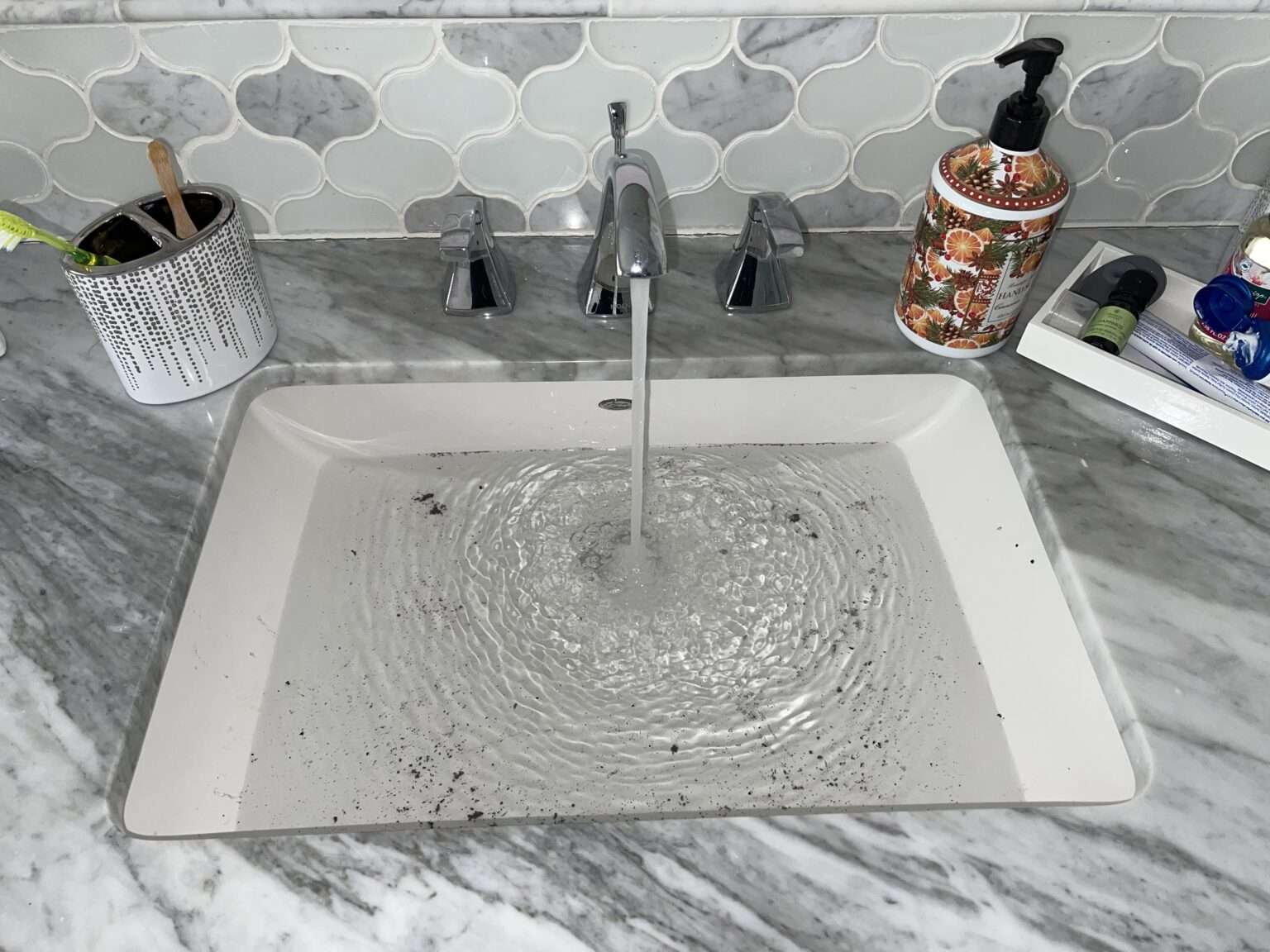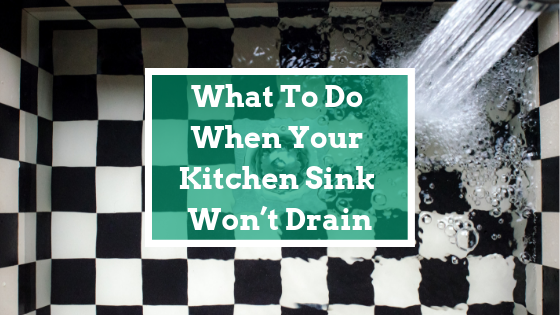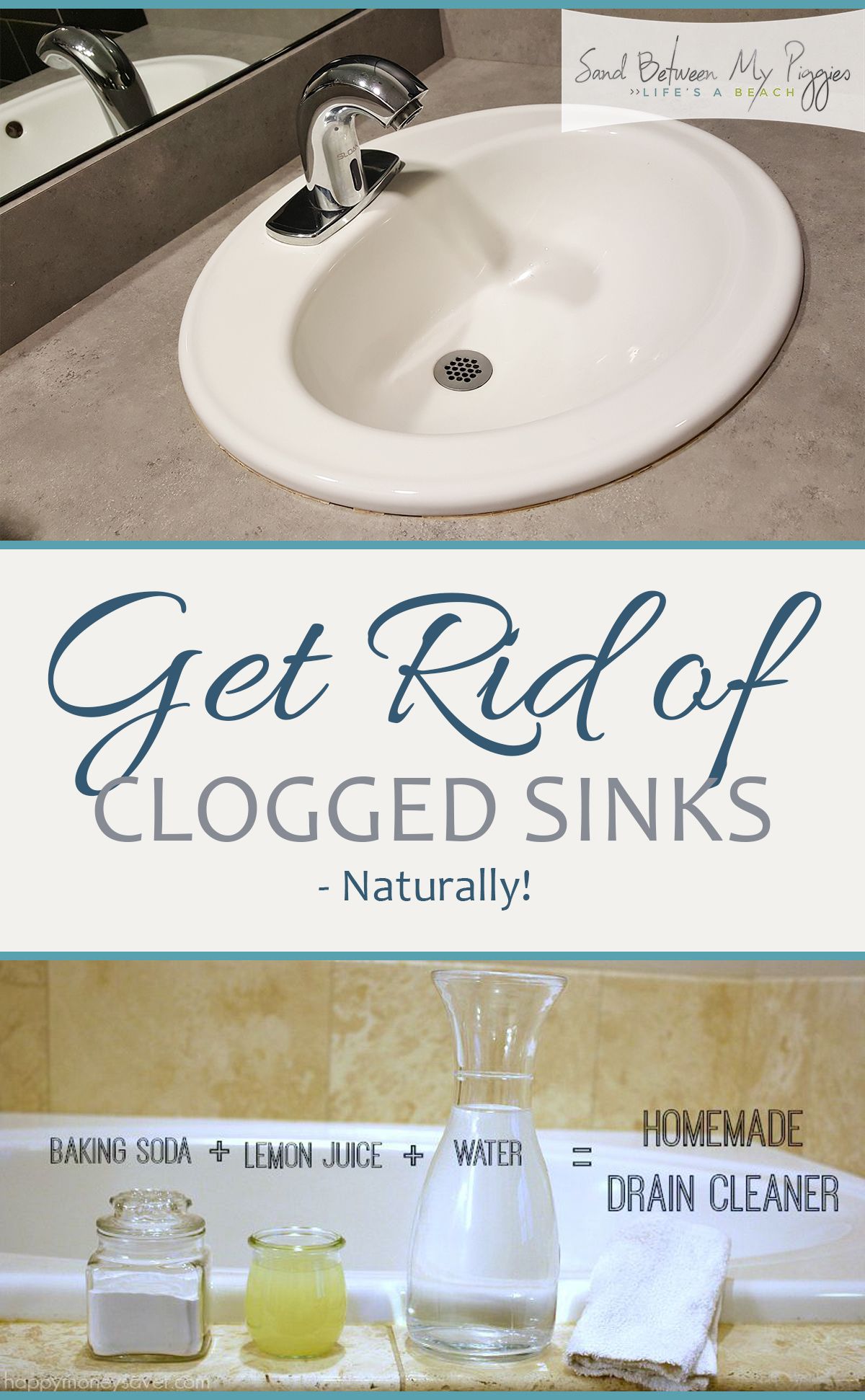Dealing with a bathroom sink that won't drain can be a frustrating and inconvenient problem. However, before you call a plumber and spend money on professional services, try some DIY solutions to unclog your sink. With a few simple steps, you can get your bathroom sink draining properly again. First, start by removing any debris or hair that may be blocking the drain. You can use a pair of tweezers or a small tool like a drain snake to carefully remove any visible clogs. Be sure to dispose of any debris properly to avoid further blockages. If this doesn't solve the issue, the problem may lie deeper within the pipes. In this case, you will need to use a plunger to try and dislodge the clog. Make sure to cover the overflow hole with a wet cloth to create suction and plunge vigorously for a few minutes. If the water starts to drain, you have successfully removed the clog. Unclogging a Bathroom Sink
A slow draining sink can be just as frustrating as a completely clogged one. If your bathroom sink is draining slowly, there are a few things you can try to fix the issue. Start by pouring boiling water down the drain to help break down any build-up. You can also try using a mixture of baking soda and vinegar to dissolve any stubborn clogs. Let the mixture sit for a few minutes before flushing it with hot water. Another DIY solution is to use a plunger to create suction and dislodge any debris or hair that may be causing the slow drain. Be sure to cover the overflow hole with a wet cloth and plunge vigorously for a few minutes. If the water starts to drain faster, you have successfully fixed the issue. How to Fix a Slow Draining Sink
If your bathroom sink is completely clogged and none of the DIY solutions have worked, it may be time to troubleshoot the problem. Start by checking the pipes under the sink for any blockages or leaks. If you notice any, you may need to remove and clean the pipes to remove the clog. Another possible cause of a clogged bathroom sink is a blocked air vent. This vent allows air to flow through the pipes and helps with proper drainage. If it is blocked, it can cause water to drain slowly or not at all. In this case, you may need to call a professional plumber to help unclog the vent. Troubleshooting a Clogged Bathroom Sink
When dealing with a clogged bathroom sink, there are a few tips you can follow to help clear the blockage. First, always try using a plunger before resorting to harsh chemicals. Not only are these chemicals harmful to the environment, but they can also damage your pipes. Additionally, always make sure to properly dispose of any debris or hair you remove from the drain. This will help prevent future clogs and keep your sink draining properly. Lastly, consider using a drain cover to catch any hair or debris before it goes down the drain. Tips for Clearing a Clogged Sink
In order to prevent future clogs, it's important to understand the common causes of a slow draining sink. One of the main culprits is hair, which can easily get caught in the drain and cause build-up over time. To prevent this, use a drain cover to catch any loose hair before it goes down the drain. Another common cause is soap scum and residue from toothpaste or other products. These can build up in the pipes and create a blockage. To prevent this, regularly flush your sink with hot water and use a mixture of baking soda and vinegar to break down any build-up. Common Causes of a Slow Draining Sink
While it may be tempting to reach for harsh chemicals to unclog your bathroom sink, there are several DIY solutions that are safer and just as effective. One of the most popular methods is using a mixture of baking soda and vinegar. Simply pour half a cup of baking soda down the drain, followed by half a cup of vinegar. Let the mixture sit for a few minutes before flushing with hot water. Another effective method is using a drain snake, which you can purchase at most hardware stores. This tool allows you to manually remove any clogs or debris from the pipes. Just be sure to dispose of any debris properly and clean the snake before storing it. DIY Solutions for a Clogged Bathroom Sink
If your sink still won't drain after trying DIY solutions, it may be time to call a professional plumber. They will have the tools and expertise to properly diagnose and fix the issue. They may also be able to offer tips on how to prevent future clogs and keep your sink draining properly. In some cases, the problem may be a larger issue with your plumbing system, which will require professional help to fix. It's important to address any drainage issues as soon as possible to prevent further damage and costly repairs. What to Do When Your Sink Won't Drain
As mentioned earlier, harsh chemicals can be damaging to your pipes and harmful to the environment. There are several ways to unclog a bathroom sink without using these chemicals. One method is using a plunger, as mentioned earlier. Another solution is using a mixture of baking soda and vinegar, which is both safe and effective. You can also try using a drain snake or removing and cleaning the pipes under the sink. These methods may take a bit more time and effort, but they are better for your pipes and the environment. How to Unclog a Bathroom Sink Without Chemicals
As mentioned earlier, a mixture of baking soda and vinegar is a great DIY solution for unclogging a bathroom sink. To use this method, start by pouring half a cup of baking soda down the drain, followed by half a cup of vinegar. Let the mixture sit for a few minutes before flushing with hot water. You may need to repeat this process a few times for stubborn clogs, but it is a safe and effective way to clear your sink without using harsh chemicals. Clearing a Clogged Sink with Baking Soda and Vinegar
To prevent future clogs in your bathroom sink, there are a few simple steps you can take. First, always use a drain cover to catch any hair or debris before it goes down the drain. This will help prevent build-up and clogs. Additionally, regularly flush your sink with hot water and use a mixture of baking soda and vinegar to break down any build-up. You can also consider using a bacterial drain cleaner once a month to keep your pipes clear and prevent clogs. In conclusion, dealing with a bathroom sink that won't drain can be a frustrating and inconvenient problem. However, with these DIY solutions and prevention tips, you can keep your sink draining properly and avoid the need for professional services. Remember to always dispose of debris properly and use safe, eco-friendly methods when unclogging your sink. How to Prevent a Clogged Bathroom Sink
Why Your Bathroom Sink Won't Drain: Understanding the Possible Causes

Introduction
 If you're experiencing the frustration of a bathroom sink that won't drain, you're not alone. Many homeowners have encountered this issue at some point, and it can be a major inconvenience. However, before calling a plumber or reaching for harsh chemicals, it's important to understand the possible causes of a clogged sink. Contrary to popular belief, a clog is not always the culprit. In fact, there are several other factors that could be causing your bathroom sink to not drain properly. Let's take a closer look at some of these potential reasons and how you can address them.
If you're experiencing the frustration of a bathroom sink that won't drain, you're not alone. Many homeowners have encountered this issue at some point, and it can be a major inconvenience. However, before calling a plumber or reaching for harsh chemicals, it's important to understand the possible causes of a clogged sink. Contrary to popular belief, a clog is not always the culprit. In fact, there are several other factors that could be causing your bathroom sink to not drain properly. Let's take a closer look at some of these potential reasons and how you can address them.
Blocked Air Vent
 One possible reason for your bathroom sink not draining is a blocked air vent. Every plumbing fixture in your house is connected to a vent pipe that allows air to flow through the drainage system. This air is crucial in helping water flow smoothly and preventing any suction or pressure buildup. If this vent pipe becomes blocked, usually due to debris or animal nests, it can cause your sink to drain slowly or even stop draining altogether. To fix this issue, you can try using a plumbing snake or call a professional to clear the blockage.
One possible reason for your bathroom sink not draining is a blocked air vent. Every plumbing fixture in your house is connected to a vent pipe that allows air to flow through the drainage system. This air is crucial in helping water flow smoothly and preventing any suction or pressure buildup. If this vent pipe becomes blocked, usually due to debris or animal nests, it can cause your sink to drain slowly or even stop draining altogether. To fix this issue, you can try using a plumbing snake or call a professional to clear the blockage.
Grease and Soap Buildup
 Another common cause of a bathroom sink that won't drain is buildup of grease and soap residue. Over time, as you use your sink for washing your face, brushing your teeth, and other daily tasks, residue from soap and grooming products can accumulate in the drain pipes, causing a blockage. This is especially common in homes with hard water, as the minerals in the water can contribute to the buildup. To prevent this issue, try using a drain strainer to catch any debris before it goes down the drain. You can also use a mixture of hot water and vinegar to dissolve any buildup in the pipes.
Another common cause of a bathroom sink that won't drain is buildup of grease and soap residue. Over time, as you use your sink for washing your face, brushing your teeth, and other daily tasks, residue from soap and grooming products can accumulate in the drain pipes, causing a blockage. This is especially common in homes with hard water, as the minerals in the water can contribute to the buildup. To prevent this issue, try using a drain strainer to catch any debris before it goes down the drain. You can also use a mixture of hot water and vinegar to dissolve any buildup in the pipes.
Old and Faulty Pipes
 If your bathroom sink drain has been consistently slow or clogged, it could be a sign of old or faulty pipes. Over time, pipes can corrode, crack, or collapse, which can impede the flow of water and cause clogs. Additionally, if your home has older pipes made of materials such as galvanized steel or cast iron, they are more prone to buildup and corrosion. In this case, it may be necessary to replace the pipes to solve the issue and prevent further problems in the future.
If your bathroom sink drain has been consistently slow or clogged, it could be a sign of old or faulty pipes. Over time, pipes can corrode, crack, or collapse, which can impede the flow of water and cause clogs. Additionally, if your home has older pipes made of materials such as galvanized steel or cast iron, they are more prone to buildup and corrosion. In this case, it may be necessary to replace the pipes to solve the issue and prevent further problems in the future.
Conclusion
 Dealing with a bathroom sink that won't drain can be a frustrating and unpleasant experience. However, before jumping to conclusions and assuming there is a clog, it's important to consider other potential causes such as a blocked air vent, grease and soap buildup, or old and faulty pipes. By understanding these possible reasons, you can take the necessary steps to address the issue and keep your bathroom sink draining smoothly. If none of these solutions work, it may be time to call a professional plumber for further assistance.
Dealing with a bathroom sink that won't drain can be a frustrating and unpleasant experience. However, before jumping to conclusions and assuming there is a clog, it's important to consider other potential causes such as a blocked air vent, grease and soap buildup, or old and faulty pipes. By understanding these possible reasons, you can take the necessary steps to address the issue and keep your bathroom sink draining smoothly. If none of these solutions work, it may be time to call a professional plumber for further assistance.






















































































:max_bytes(150000):strip_icc()/freshen-and-unclog-drain-with-baking-soda-1900466-17-20179d73b7a2455797ebc6a5f5bf7479.jpg)



:max_bytes(150000):strip_icc()/freshen-and-unclog-drain-with-baking-soda-1900466-22-bbf940b70afa4d5abef0c54da23b1d3f.jpg)











